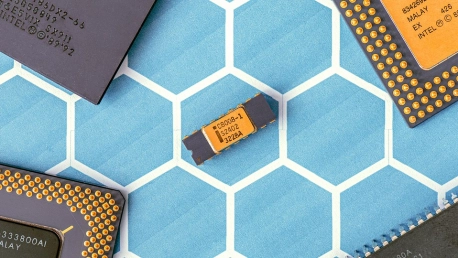With the dedicated graphics market dominated by Nvidia, and to a certain degree by AMD, a new competitor is expected to enter the scene in 2020—Intel.
Intel seems to want a slice of the dedicated GPU market, after being invested in the CPU world for so long, being the top choice for many consumers, and controlling the CPU market.
Intel’s dedicated GPU was announced in August 2018 with a teaser tweet, but it wasn’t until December 2018 that the actual name of their discrete graphics card surfaced: Xe.
Three distinct micro-architectures will see the light of day, known as Xe-LP, Xe-HP, and Xe-HPC, covering entry-level graphics cards, enthusiast-grade chips, and lastly, datacenter-centric GPUs for supercomputing.
Former AMD employee, Raja Koduri, is at the helm, which came as a shock to AMD fans—Raja Koduri, the previous head of AMD’s Radeon Technology Group, where he spent several years, joined Intel back in 2017, two days after resigning from AMD. Now he is the senior Vice President, Chief Architect, and General Manager of architecture, graphics, and software at Intel Corporation
AMD employees joining Intel is nothing new though—Jim Keller, the lead architect on AMD’s Zen architecture, came on board in mid-2018, with other AMD employees being picked up over the past years.
With fresh new forces, Intel is sure to surprise the GPU world
Intel’s current integrated graphics that come in a bundle with their CPUs are nothing to brag about. Sure, they might be able to do all the basic tasks without even flinching, but if you’re trying to do something more demanding, such a solution will not be able to deliver as much as a dedicated GPU can.
And so, one question remains—what is Intel trying to do with this move? Directly compete with Nvidia and AMD over the gaming market, where people will pay up to $1200 for a discrete graphics card?
Perhaps the company is looking to gain a more firm grip on the laptop market? Laptops that don’t offer a discrete graphics solution are not ideal if you plan on doing more than just browsing the web and some light work—and by getting a laptop with a discrete solution from Nvidia or AMD, you will clearly notice the difference.
So far, Intel’s press releases point to the fact that they want to offer graphics hardware for a variety of systems, which might suggest going head to head with Qualcomm and Apple as well, or competing even more in the data center market with Nvidia, where Nvidia currently has a strong foothold, powering various research projects and self-driving cars.
Only time will tell, but it’s easy to get a glimpse into what the future might bring; Raja Koduri tells us:
“Not everybody will buy a $500 – $600 card, but there are enough people buying those too—so that’s a great market. So the strategy we’re taking is we’re not really worried about the performance range, the cost range and all, because eventually our architecture as I’ve publicly said, has to hit from mainstream, which starts even around $100, all the way to Data Center-class graphics with HBM memories and all, which will be expensive. We have to hit everything; it’s just a matter of where do you start? The first one? The second one? The third one? And the strategy that we have within a period of roughly, let’s call it 2 – 3 years, to have the full stack.”
If Intel proves that it can take the dedicated GPU segment head-on, this might close the gap for prices that slowly, but surely, increased over the years.
Besides potentially fixing the price discrepancies, this might also push the envelope by making the other two competitors work harder in order to develop and release even greater performing cards at more competitive prices—the GPU market is not very balanced when it comes to releasing top of the line products.
Currently, if one competitor releases a GPU while the other one has no equal answer, the only response for the competing team is to approach the market from a more price-to-performance ratio aspect; offering no real persuasion for the other party to release their truly top of the line consumer product—which is the case with Nvidia and AMD, with Nvidia being the top performer, while AMD’s approach is from a more price-to-performance aspect.
But one thing remains certain, more options will greatly benefit the consumer both from a price and performance aspect.









